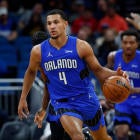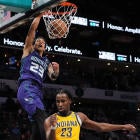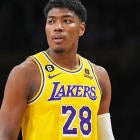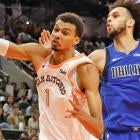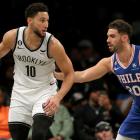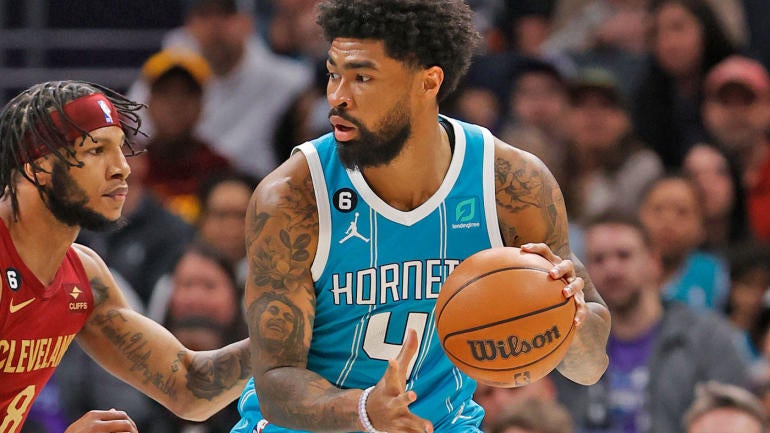
Welcome back. Happy St. Patrick's Day. There is less than one month remaining in the NBA regular season.
As we get closer and closer to the end, managers must remember to constantly recalibrate what injured players are worth holding onto. NBA teams have 10-14 games remaining. If you're in a head-to-head league that concludes before the last week of the season, then you're only concerned about the next 6-10 games (or fewer). It was just announced that Collin Sexton (hamstring) will miss at least one more week – that's four games, 30% of Utah's remaining schedule (50% in many head-to-head leagues). He's nowhere near good enough to hold when we know he's going to miss at least that many games.
Sexton is an easy example, with a team that gave a specific timeline and a player already close to the waiver wire cut line. The decision is harder with a top-100 player and an ambiguous timeline, but we're getting close to the point where a multi-game injury makes any non-star immediately droppable. The difference between Fantasy's 100th-best player and its 150th is easily outweighed by two or three extra games played.
As always, the players in this article must be rostered in less than two-thirds of CBS leagues. Players are listed in the order that I recommend adding them, assuming they are equally good fits for your team.
Adds for all leagues
Nick Richards, Hornets (26% rostered)
Mark Williams (thumb), noted friend of the column, has missed the last three games. And, true to tanking season in a league with terrible injury reporting on its best days, we have no idea if or when Williams will return. Given all available information, it seems safe to assume he'll miss several more games at minimum. His absence has meant a promotion for Richards, who is averaging 10-9-2 in 28.3 minutes through three starts. Richards is a capable shot blocker, likely to average nearly two per game as long as his minutes remain elevated. He's a classic waiver-wire big man, except with slightly better free-throw shooting.
Austin Reaves, Lakers (30% rostered)
Reaves is making the most of LeBron James' (foot) absence. In the nine games since James last played, Reaves is averaging 16-2-6 with 1.6 3s and an excellent 54-42-83 shooting split. Finding six assists per game on the waiver wire is rare. And James is still at least a week away from returning. As addressed in this article's open, that means Reaves' runway as a high-value Fantasy pickup is at least 42% of the Lakers' remaining games (L.A. plays five times between publication of this article and James' first possible return game). Richards might last the remainder of the season on rosters, but for the next week, Reaves is the most valuable pickup out there.
Jaden Hardy, Mavericks (11% rostered)
Luka Doncic (thigh) might return for the Mavericks' game Monday. That will meaningfully cut into Hardy's value. Kyrie Irving (foot) is questionable to return Friday, and his eventual return is also bad for Hardy. But Hardy's production in the three games without the Mavericks' star guards demands our attention. He averaged 24-5-3 with 3.7 3s in those starts. Hardy was a much-hyped prospect coming out of high school, but he dropped to the second round of the 2022 draft after a mediocre season with the G League Ignite. While he had difficulty cracking the Dallas rotation earlier this season, the 20-year-old has a ton of potential that he appears to be unlocking. He'd be this week's top add if Doncic and Irving didn't seem so close to returning.
Talen Horton-Tucker, Jazz (64% rostered)
I am not what you might call a "THT believer". That said, I should acknowledge it when a widely available player drops 37-8-10, as Horton-Tucker did Saturday in Charlotte. On the one hand, this outburst came against one of the worst teams in the NBA. On the other, the Hornets have shown signs of life lately, and Horton-Tucker's box score is part of a recent surge in production. He's started the last nine games as a pseudo-point guard, averaging an impressive 16-5-6 in 28.6 minutes. Collin Sexton (hamstring) will miss at least another week, though Jordan Clarkson (finger) appears to be progressing towards a return (of course, we have nothing resembling an official timeline. Why would we?). Horton-Tucker is worth rostering at least as long as those two are out, possibly longer. Just don't count on too many more 37-point outings.
Xavier Tillman, Grizzlies (58% rostered)
It's been a disappointing week for Tillman -- there's no way around that. But, despite putting up just 9-5-2 in 25.0 minutes across three games, the reasoning that made him one of last week's top adds still mostly stands. Steven Adams' (knee) and Brandon Clarke's (Achilles) regular seasons are over, leaving Tillman as the uncontested starter. In the first three games without Adams and Clarke, Tillman's minutes jumped to 32.0. So not only is there upside in his likely workload, but last week's production also represents close to the worst-case scenario since he underperformed compared to his seasonal per-minute averages. And even while his points and rebounds were low, Tillman still contributed on defense with 2.0 stocks per game last week. My enthusiasm has dampened, but he's still very addable.
Other recommendations: Malik Monk, Kings (49% rostered); Herbert Jones, Pelicans (54% rostered); Jalen Suggs, Magic (56% rostered); Josh Green, Mavericks (19% rostered); Andrew Nembhard, Pacers (29% rostered); Josh Okogie, Suns (32% rostered); Cory Joseph, Pistons (10% rostered)
Deep-league special
Corey Kispert, Wizards (9% rostered)
On recent production alone, Kispert is worth considering in standard leagues. That said, his stat profile is extremely limited, and most standard league managers need players who help in more than just two categories. Deep league managers can't always be so picky, and Kispert has been really good in those two areas, averaging 13.9 points and 2.7 3s per game over his last seven. Also, if we're picking nits, he's technically helpful in three categories thanks to his 49.6% FG, though his field goal attempts are low enough that his efficiency barely registers. The point is that a widely-available pickup scored in double figures six times across seven games while playing 32.0 minutes. That's not always the case in some leagues.
Other recommendations: Joe Ingles, Bucks (9% rostered); Jordan Nwora, Pacers (9% rostered)
Schedule notes
Week 23 has an average amount of games and a semi-balanced schedule.
There are 15 teams with four games, 12 with three games, and three (Nuggets, Pistons, Heat) have two games.
Wednesday, Friday, and Sunday are the busiest days, but they only sport 10, 10, and nine games. Thursday is light with four games, and the remaining days all boast six games.
Daily lineups leagues
There are as many games over the weekend (25 from Friday to Sunday) as between Monday and Thursday (26). Usually, the gap is larger, but the league shifts more games to the weekend as the season wraps up.
That shifting balance is important in leagues with daily lineups for a simple reason. Try to follow along, because this math gets complicated. Since there are more days between Monday-Thursday than Friday-Saturday (4 vs. 3), we have more starting slots available in our Fantasy lineups. Radical stuff, I know. Depending on your league's rules, you can build up a sizable games advantage through aggressive early-week streaming.
Even if your acquisition limits restrict your ability to stream heavily, the shifting schedule means we should shift our strategies. Most of the season, managers backloaded their waiver pickups to target specific categories and/or ensure they don't miss out on a breakout pickup. That strategy made sense, but now we have to shift. The opportunity cost of missing a breakout player is now low due to the constant turnover of Silly Season and the limited number of remaining games. Now we must shift to prioritize games played, which will often mean using most or all of your weekly acquisitions early in the week. Because of the combination of fewer games being played and more starting spots available in your roster, you can build up a meaningful advantage.
No teams begin the week with a back-to-back, and the Knicks are the only team to start with a 3-in-4. However, if you have an extra pickup available in Week 22, several teams have a Friday-Monday 3-in-4 (Bulls, Warriors, Grizzlies, Timberwolves, 76ers, Rockets). That would allow you to take advantage of the Thunder or Spurs, who have a Tuesday-Friday 3-in-4 in Week 23.
The Nets and Thunder end Week 23 with a 3-in-4, and the Nets and Hawks end the week on a back-to-back.
Weekly lineups leagues
Among teams with three games, the Clippers, Magic, Lakers, and Raptors all stay home and avoid any back-to-backs. That said, we need to be wary of Lakers and Raptors who are on the injury report. Their first games aren't until Wednesday, which may be too late to adapt if a player is ruled out.
The Bucks, Suns, and Trail Blazers also have a three-game week with a first game on Wednesday, but their schedules would be unattractive even without the late start. The Bucks have it worst, with a Friday-Saturday altitude back-to-back in Utah and Denver. The Suns have two away games and a 3-in-4. Portland's schedule is the least bad of the bunch, but they still have an away game in Utah.
The Grizzlies' schedule is by far the most favorable among teams with four games. They have no back-to-backs, two games vs. the Rockets, and one against the Mavericks.
On the other end of the spectrum, the Thunder, Pacers, and 76ers all play four games in six days, all on the road.













